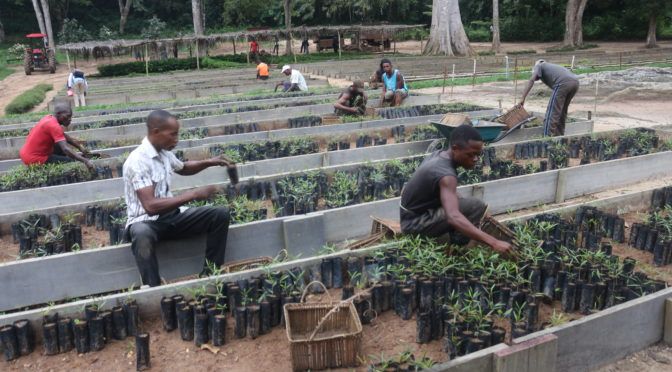Population growth, poverty and the growing need for energy are among the main causes of forest cover loss in Africa. Every year, the continent loses more than 2 million hectares of forest. The production of charcoal and firewood and the development of space for agricultural activities are among the causes of this deforestation. This loss of forest cover also brings with it the degradation or impoverishment of the soil, making any agricultural activity difficult.
The Democratic Republic of Congo is not spared by this reality. In Yangambi, in the province of Tshopo, population growth, lack of electricity, lack of sustainable employment and poverty have led the population to put enormous pressure on the Yangambi Biosphere Reserve. One of the consequences of this pressure is deforestation, which has led to soil degradation, thus plunging a large part of the population into poverty. This is why the Center for International Forestry Research (CIFOR) has been developing several activities in this region since 2017, with a view to sustainable development, including restoration and raising awareness among the population. To get a feel for the reality, we decided to visit Yangambi.
La croissance démographique, la pauvreté et le besoin croissant en énergies figurent parmi les principales causes de la perte du couvert forestier en Afrique. Chaque année, le continent perd plus de 2 millions d’hectares de forêt. La production de charbon de bois, de bois de chauffe et l’aménagement de l’espace pour des activités agricoles figurent parmi les causes de cette déforestation. Cette perte du couvert forestier entraîne avec elle aussi la dégradation ou l’appauvrissement du sol, rendant ainsi difficile toute activité agricole.
La République Démocratique du Congo n’est pas épargnée par cette réalité. A Yangambi, dans la province de la Tshopo, la croissance démographique, l’absence de l’électricité, le manque d’emploi durable ainsi que la pauvreté ont poussé la population à exercer une énorme pression sur la réserve biosphère de Yangambi. Une pression qui dénombre parmi les conséquences, la déforestation qui a entraîné avec elle la dégradation du sol, plongeant ainsi une grande partie de la population dans la pauvreté. C’est ainsi que le Centre de Recherches Forestières Internationale (CIFOR) développe depuis 2017 plusieurs activités dans cette contrée, en vue du développement durable, entre autres la restauration et la sensibilisation des populations. Pour palper du doigt la réalité, nous avons décidé d’effectuer une descente sur terrain à Yangambi.
Read the full story in French on the Environews-RDC website.
